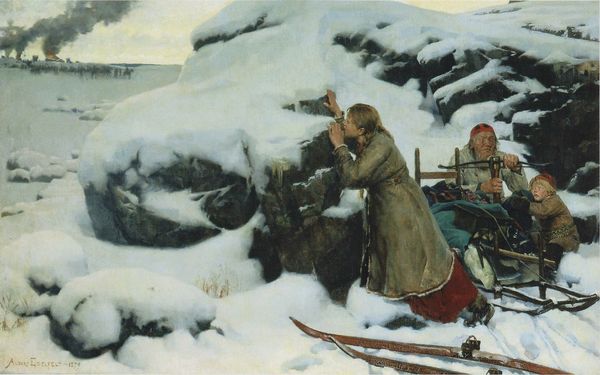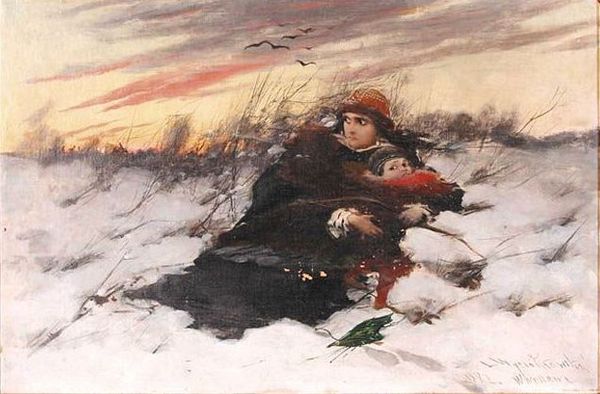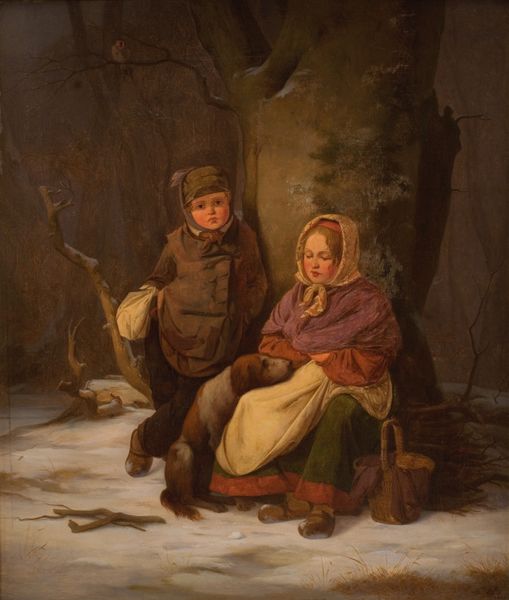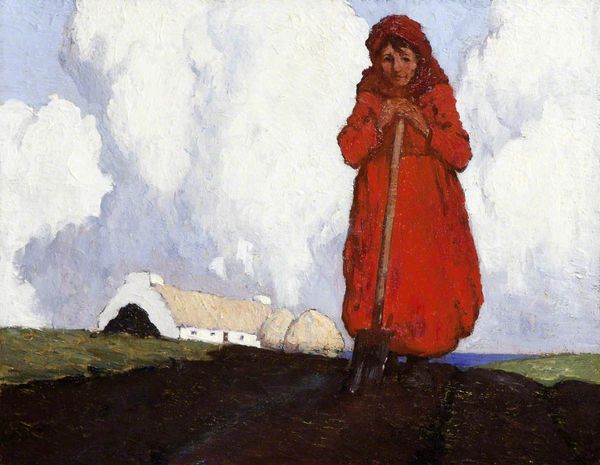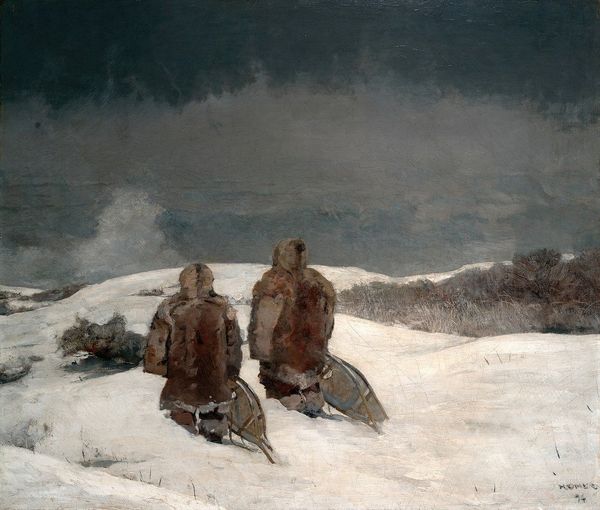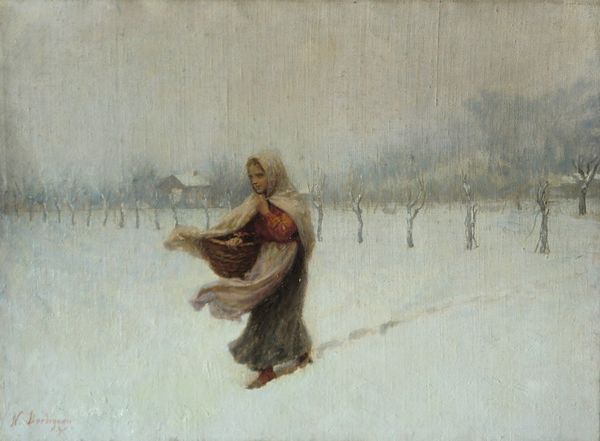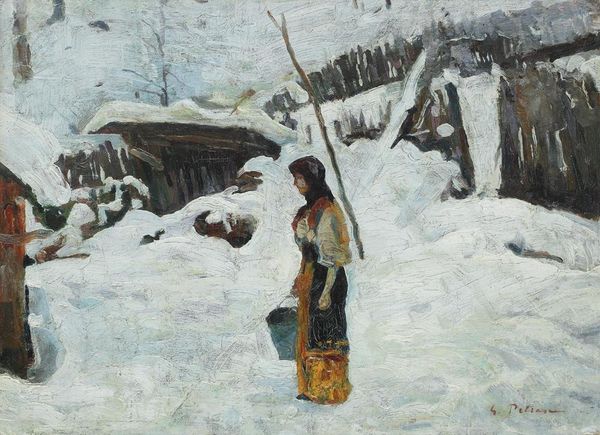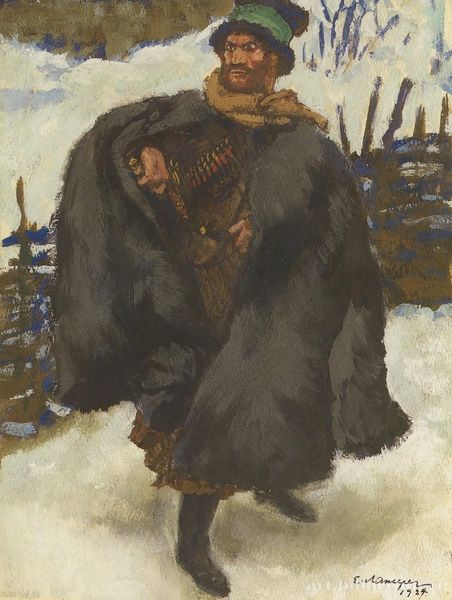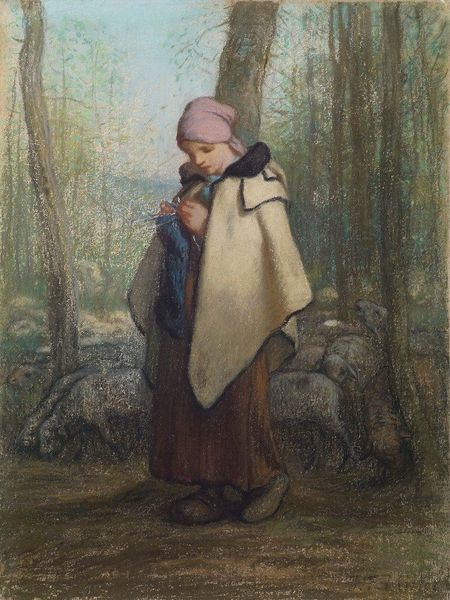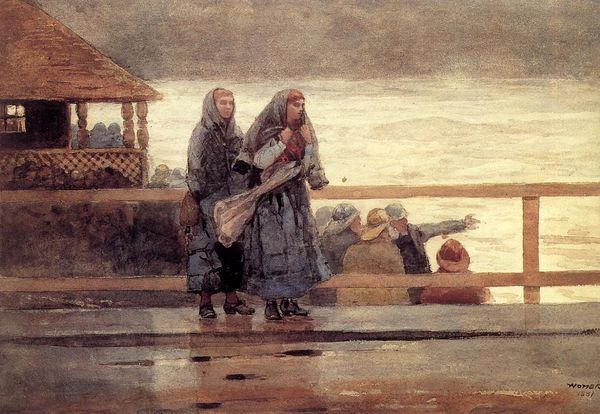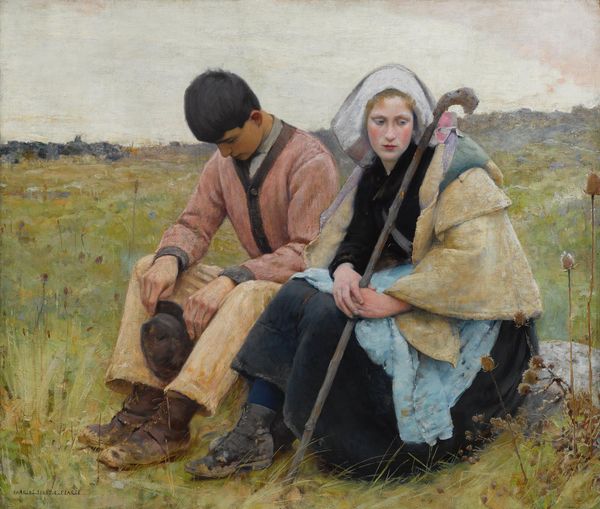
painting, oil-paint, impasto
#
portrait
#
figurative
#
painting
#
oil-paint
#
landscape
#
charcoal drawing
#
figuration
#
oil painting
#
impasto
#
genre-painting
#
realism
Copyright: Public Domain: Artvee
Editor: So, here we have Albert Edelfelt’s “Study For Burned Village,” created between 1878 and 1879 using oil paint. The desolation really strikes me. You have these figures huddled in the snow, and then, off in the distance, this almost spectral group of people. How do you interpret this work? Curator: This piece resonates deeply within its historical context. Edelfelt was a master of Realism, capturing poignant social narratives. The stark winter landscape and the figures' vulnerability speak to the impact of conflict and hardship. Look at how he uses impasto to depict the snow – almost like solidified pain. Editor: So, you're saying the way he depicts the environment heightens the emotional impact? It's not just about documenting a scene, but about conveying feeling? Curator: Precisely! Consider how institutions and political forces shaped Edelfelt's opportunities and subject matter. His access to the Parisian art scene, his status as a Finnish artist portraying national identity in the face of Russian rule, all played a part. Ask yourself, what message about resilience do you think he aims to evoke, knowing his work was intended for public viewing? Editor: I guess the strength of those figures becomes clearer knowing that. They're survivors, not just victims, which also ties into the public role of art as not just something to look at, but as a possible source of courage or change. Curator: Exactly. The “Burned Village” hints at Edelfelt’s dedication to public art in promoting understanding of our collective historical challenges and also social cohesion during turmoil. Editor: It's fascinating to see how historical context and artistic technique work together. Thanks for illuminating the deeper meaning behind the brushstrokes. Curator: My pleasure. It’s important to analyze not just what we see, but *why* we are seeing it presented in that particular way, in that historical and social moment.
Comments
No comments
Be the first to comment and join the conversation on the ultimate creative platform.
